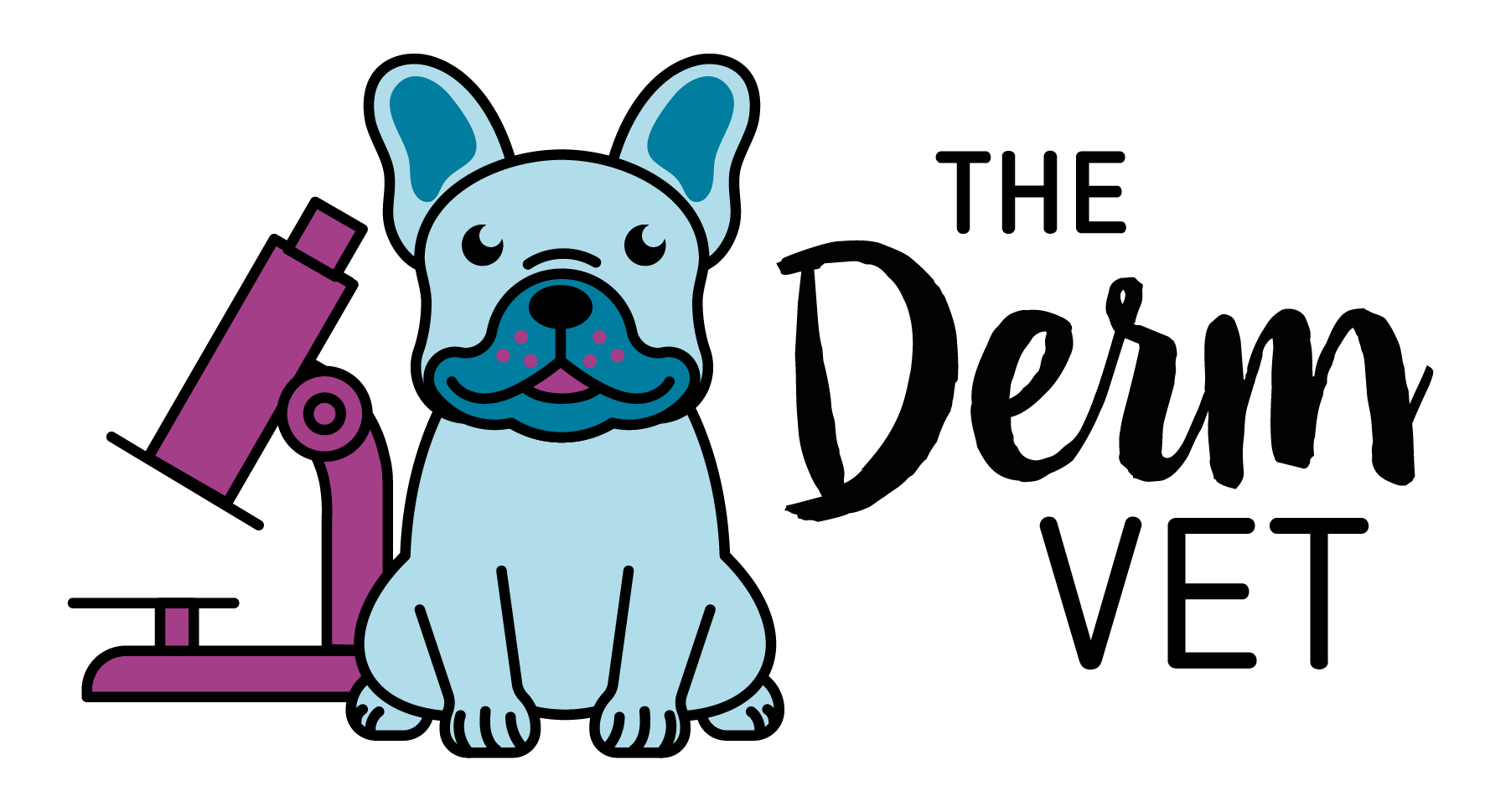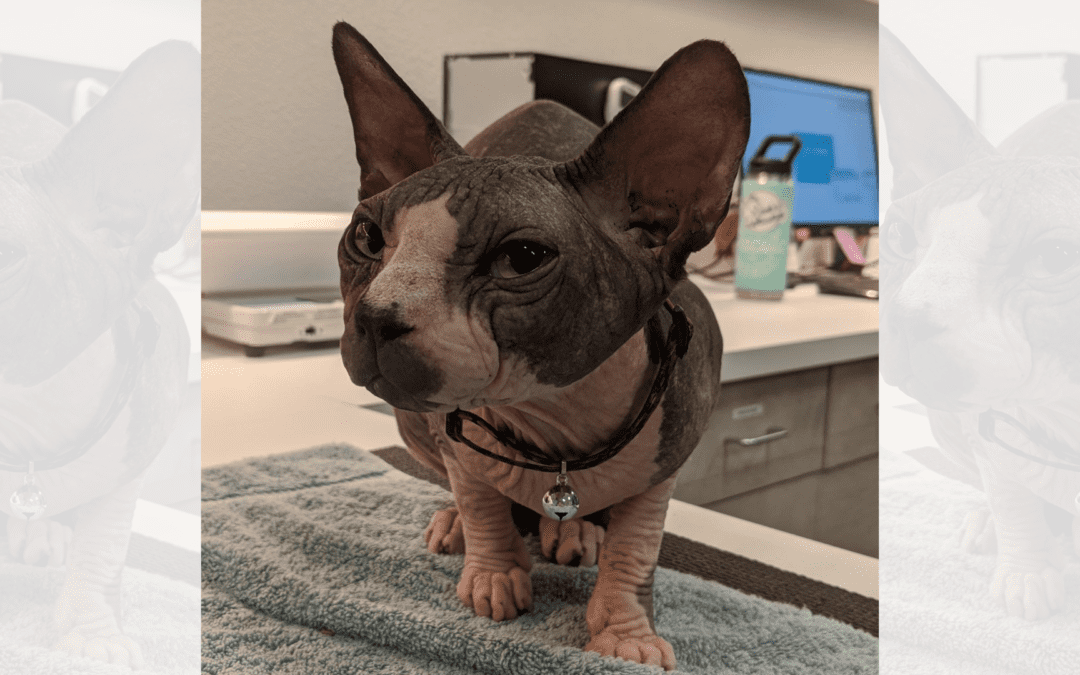The audience had spoken, and one message that was received loud and clear was:
“We want to hear more about CATS!”
Specifically, addressing feline friends and their skin issues!
There’s a big difference between cats and dogs in the world of dermatology, and there is no doubt that cat skin issues can be frustrating due to the limited treatment options and overall difficulty of medicating cats regularly. *Most* cats (not ALL!) don’t want their owners chasing them down day after day to ingest a pill. Some will downright not allow for it!
Luckily, my guest on the podcast, Dr. Eva Ganz, Dip. ACVD, couldn’t pass up the opportunity to talk about this topic, as it’s one of her favorites! As a cat derm lover, head of the dermatology department at the Metropolitan Animal Specialty Hospital in Los Angeles, and my previous resident mate, I KNEW we’d have a blast bouncing ideas and methods off of each other, and I was right!
In the episode, we focus mainly on feline allergies. Collectively, we have seen a jump in numbers as far as owners seeking out specialty medicine for their cats. This might be attributed to the shift in urban lifestyle vs. “barn cat” life, but either way, advancements are in the works for figuring out how to help these itchy kitties.
What can we do in the meantime while waiting for advancements in different and effective skin therapy treatments for felines?
For starters, we can take a look at the three most common manifestations of allergies in cats, which we discuss in-depth in the episode:
- Bald bellies
- Crusted papules/Miliary dermatitis
- Eosinophilic granuloma complex
The first manifestation, bald bellies, is something owners may not even notice at first, as some think a bald belly is natural for a kitty. That’s not the case! Dr. Ganz and I discuss how we can guide our patients to better understand their cat’s grooming habits in order to determine if it’s an issue or within the normal range.
- We can ask them guiding questions that could reveal some eye-opening findings, such as: “Have you noticed excessive hairballs?”.
- We can give them a more defined explanation of “normal grooming” habits so they can monitor and report back.
- Are there other cats in the home? We can use the other cats as a gauge by comparing grooming habits.
Dr. Ganz and I also explored one simple and cost-effective way you can rule out a possible issue for your cat:
Regular (quality) flea prevention!
It only makes sense to rule out something as easy to identify as fleas, and we are believers that even indoor-only cats should be on flea prevention year-round. By making sure you’re diligent in your flea prevention administration, you are also getting the most efficiency out of your dermatology appointment, as it is something that will be explored!
What about food?
Of course a cat’s diet could be a contributing factor, which is why Dr. Ganz and I discuss how we approach a food trial when trying to diagnose and treat skin issues in felines.
In some ways, cats can be easier to food trial than dogs, because you don’t run the risk of table food consumption nearly as often. Then again, if you are an owner of multiple cats, food trials may be difficult to track, but there ARE ways you can make it work if you aim to be consistent.
What are the current treatment options available?
First and foremost, a thorough workup is SO important. It only makes sense to want as much information as possible when determining what treatment plans to proceed with.
Dr. Ganz and I discuss the different scenarios in which we would use a few different methods, and when allergy testing is appropriate, as well as what kind of testing we prefer to do.
For example, you could offer a broad spectrum anti-inflammatory, such as Atopica, but there might be some drawbacks. As mentioned before, cats aren’t always easy to give oral medication to, especially daily! If you can find a way, or have a very food-motivated cat, this could be a good route to explore depending on the situation.
Immunotherapy is often an excellent solution to explore for cats with a pollen or dust allergy. Why? Because it will actually address the underlying issue by altering the immune system, rather than just putting a band-aid on to relieve the itchiness.
If subcutaneous is an option, it’s usually the better and most humane thing for a cat who HATES taking oral medicines. Rather than having to chase them down every day, you can give the cat an injection every few weeks. It’s a win for all involved!
In conclusion:
Cats are not just small dogs! We cannot treat their skin issues in the same way!
If you are in need of guidance when it comes to cat dermatology, you do NOT want to miss this episode. Dr. Ganz brings so much insight to the table, and we were able to cover a LOT of ground for our feline friends!
Take a listen to the full episode here!
And don’t forget… there’s more good stuff to come! Make sure to subscribe so you don’t miss a beat!


